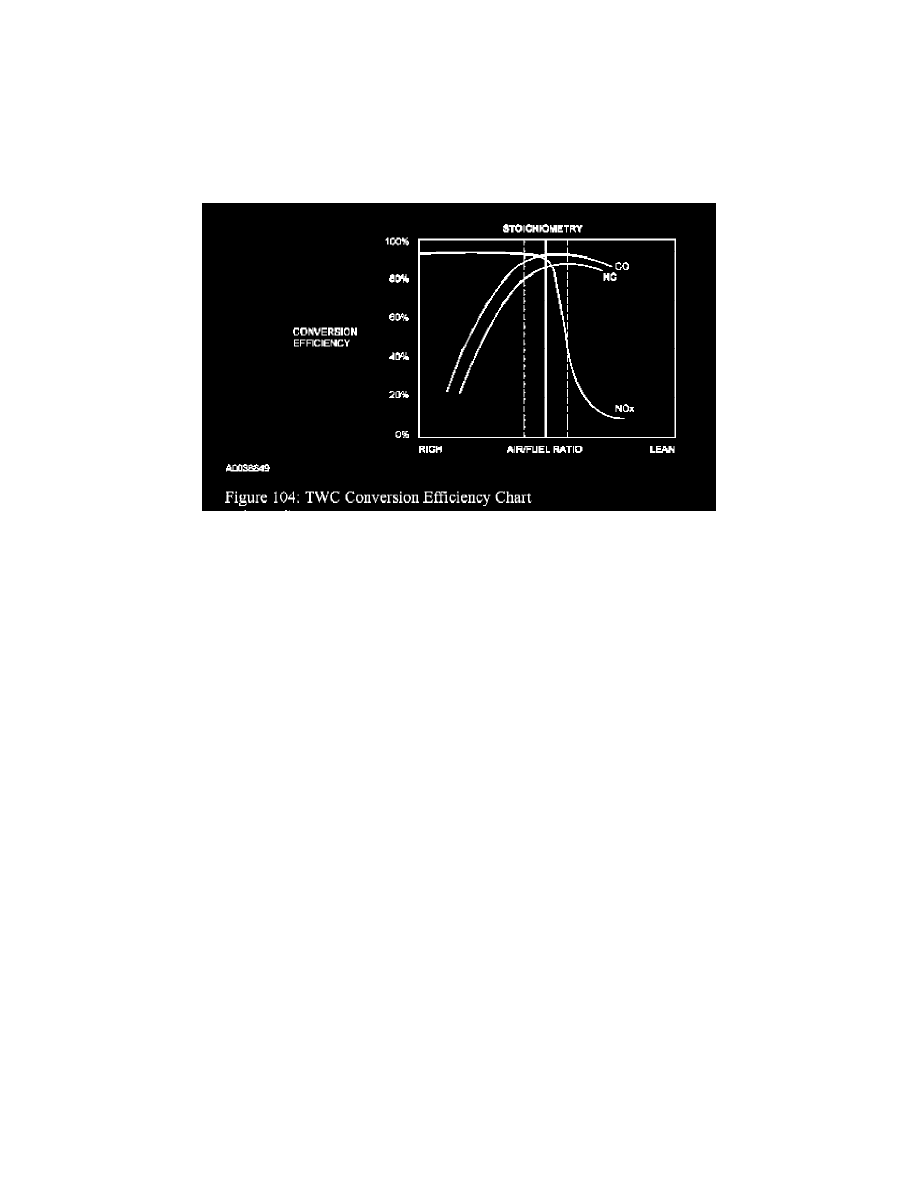Five Hundred AWD V6-3.0L VIN 1 (2005)

manifold as possible. Because the light off catalyst is located close to the exhaust manifold it will light off faster and reduce emissions quicker than the
catalyst located under the body. Once the catalyst lights of{ the catalyst will quickly reach the maximum conversion efficiency for that catalyst.
Three-Way Catalyst (TWC) Conversion Efficiency
A TWC requires a stoichiometric fuel ratio 14.7 pounds of air to 1 pound of fuel (14.7: 1) for high conversion efficiency. In order to achieve these
high efficiencies the air/fuel ratio must be tightly controlled with a narrow window of stoichiometry. Deviations outside of this window will greatly
decrease the conversion efficiency. For example a rich mixture will decrease the HC and CO conversion efficiency while a lean mixture will decreases
the NO conversion efficiency.
Exhaust System
The purpose of the exhaust system is to convey engine emissions from the exhaust manifold to the atmosphere. Engine exhaust emissions are directed
from the engine exhaust manifold to the catalytic converter through the front exhaust pipe. An HO2S is mounted on the front exhaust pipe before the
catalyst. The catalytic converter reduces the concentration of carbon monoxide (CO) unburned hydrocarbons (HCs) and oxides of nitrogen (NO) in the
exhaust emissions to an acceptable level. The reduced exhaust emissions are directed from the catalytic converter past another HO2S mounted in the
rear exhaust pipe and then on into the muffler. Finally the exhaust emissions are directed to the atmosphere through an exhaust tailpipe.
Note: On some partial zero emission vehicles (PZEV) there will be a total of 3 HO2S in the exhaust stream. One near the exhaust manifold (stream 1)
one in the middle of the light-off catalyst (stream 2) and the third (stream 3) is mounted afier the light-off catalyst.
